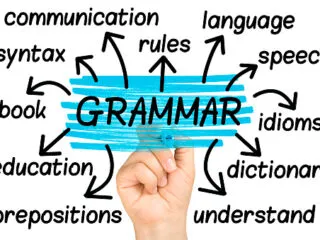Prepositions are the words that are used to show the relationship between the noun and pronoun with the other elements in the claim or to show location. Most people face confusion is using prepositions like “In” and “On”.
People often get confused while using “In” and “On” in sentences. To clear this confusion, it’s important to know the correct usage of this preposition.
The word “In” is used when someone is referring to a situation in which something is enclosed by something else. Whereas, “On” is used when someone talks about a situation where the object is placed above or outside something else.
This article will help you in getting a clear idea about this proposition and will help you in understanding the right usage of “In” and “On”.
What Does “In” Mean?
The preposition “In” is used in sentences to mean something in an enclosed place (i.e. an expense having physical or virtual extremities) or surrounded by something else.
The word “In” is used when something is inside a place or an object or included by something. For example:
- John is sitting in the car.
- My sister studies in a classroom.
- Emma is among the top hairdresser in the town.
- What is in your pocket?
“In” can also be used for indicating part of a larger group or something else. It can also be used to express the time period. For example:
- The show came out in 2000.
- This is the first time I am going to Paris, in 15 years.
It can also be used with parts of the day and to imply not exceeding the time specified. For example:
- The teacher will arrive in a couple of minutes
- She was in a hurry, as she has an appointment today.

What Does “On” Mean?
The word “On” is used when someone is referring to a situation in which something is in physical contact with something else or placed above it or has the support of something.
Here’re examples of a few situations in which you can use the word “On”. The word “On” can be used to represent something that is placed above something and is in touch with it. For example:
- Your file is on the top of the table.
- I saw a beggar last week, standing on the road.
“On” can also be used to show the relationship between something and to indicate time, i.e. days, dates, and special days. For example:
- The farewell party will be held on Sunday.
- My birthday is on 15 July.
Difference Between “In” and “On”?
“In” and “On” are prepositions and two different words and their usage is also different. You should use “In” and “On” differently in sentences. “In” implies a situation. It’s used when referring to a situation in which something is surrounded by something else. On the other hand, “On” is used in the situation when something is in physical contact with the surface of another object.
Moreover, “In” is used when somebody talks about months, years, seasons, decades, and centuries. Whereas, “On” is used when referring to days, dates, and special occasions. “In” is mostly used when talking about a place, town, city, state, and country. While “On” is used with street names.
Comparison Chart
| BASIS FOR COMPARISON | IN | ON |
|---|---|---|
| Meaning | “In” is a preposition that is commonly used to indicate a situation when something is enclosed or surrounded by something else. | “On” refers to a proposition that indicates a situation when something is positioned above something else. |
| Pronunciation | ɪn | ɒn |
| Usage by time | Months, Years, Season, Decades, and Century. | Days, Dates, and Special Occasions. |
| Usage by place | Name of town, city, state, and country. | Street names. |
| Example | She is sitting in her room. | I will meet her on Monday. |
| He likes to swim in your pool. | Jack’s birthday is on the 25th of February. | |
| Mark lives in Dubai. | Sara is on her way to London. |
Examples of “In”
Here are a few examples of sentences using “In” to give you a better idea of how can you use this preposition correctly:
- Can you submit your assignment in two days?
- He arrived at the party in time.
- Your keys are in my bag
- I’m in the office now.
- I live in London.
Examples of “On”
Here are a few examples of “On”:
- He sat on the bench.
- He reached the airport on time.
- I’m on my way home.
- Emma is on leave this month, due to her brother’s marriage.

Conclusion
“In” and “On” are prepositions that are used to show the connection between nouns and pronouns. English speaker often gets confused while using these preposition and mix them up in sentences.
To know the differences between “In” and “On”, it’s important that one must know about their uses first. Moreover, there are a few rules regarding the use of the words “In” and “On”, which one should understand clearly to use correctly and confidently in the sentences.
The main difference between “In” and “On” is that “In” indicates inside something, whereas, “On” indicates on the top of something. Do remember these two words combine very well with various verbs to give varied meanings.
People tend to get confused between these two words when talking about a location. So you must understand that the location is defined differently by the two prepositions “In” and “On”.
Other Articles
- Difference Between Thy & Thine (Thou & Thee)
- Difference Between “Why Do You Ask” VS. “Why Are You Asking”? (Elaborated)
- Difference Between Ourself and Ourselves (Revealed)

